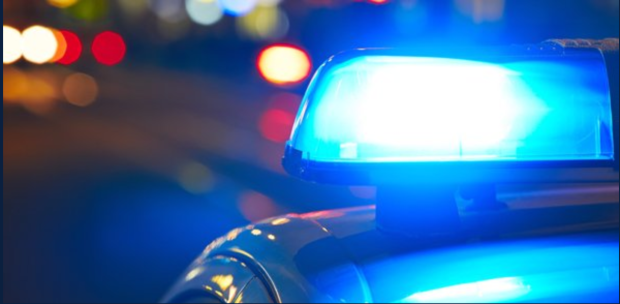Victoria police request 'cruise lights' to increase visibility on roads
Victoria police hope to spearhead a one-year pilot project that would see six of their 40 vehicles fitted with solid blue lights that would be on at all times to increase police visibility.
Chief Const. Del Manak told CBC it was "quite clear" from the department's 2017 public engagement survey that residents "would like to see ... increased police engagement with the community."
He said his team has already purchased the lights, which are separate from emergency lights and would activate them after the project is approved by the Ministry of Transportation and Infrastructure.
"We want to test it," said Manak, of the project. "The lights [would be] on either end of the light-bar that's on the rooftop of every police car."
Manak noted the lights would be helpful during the evening, when police cruisers can be difficult to see.

A first in Canada
The project would be the first of its kind in Canada.
Currently, sections 4.28 (2) and (8) of the Motor Vehicle Act Regulations allow red and blue emergency lights on police vehicles. Some police departments in the United States, including Georgia, Virginia, Ohio and Hawaii, have recently adopted solid "cruise lights" for non-emergencies.
Police in Delta B.C., are also "in the preliminary stages" of researching cruise lights, said Cris Leykauf, Delta police's public affairs manager.
Approval taking longer than expected
In order for the pilot to take effect, Victoria police must obtain the province's written approval for the new use of lighting, as outlined in section 4.02 of the MVAR.
A Freedom of Information request shows police have been seeking approval since last July.
Geoff Ford, acting manager of the inspections and standards program with the Ministry of Transportation, told Manak in a letter that he wants more information.
"While it may seem like a local issue, the act and application of it is a province-wide consideration, and we must be satisfied that this request is able to be attributable to others that may wish to do the same," wrote Ford.
A statement from the Ministry of Transportation says that it would "require support from the British Columbia Association of Chiefs of Police and a detailed plan to ensure road users are educated about what to do when seeing a vehicle with blue lights."

Public reactions mixed
Victoria resident Stephen Harrison, who obtained the FOI, said the fact that police have already obtained the proper lights is "incredibly presumptuous," and spoke against a heightened "surveillance state," especially when Victoria has been one of the most heavily policed cities in Canada.
"[We don't need] cruisers rolling along with lights reminding us that [police] are watching," he said. "Particularly some of those groups that are over-policed like people living in poverty, Indigenous people and people of colour."
Manak said the pilot project wouldn't affect areas that have higher numbers of marginalized people, like the homeless, because "most of the preventative work we do there is done by our bike officers … and our foot patrol."
He said he's "checked in" with "supervisors with vested interests in protecting the vulnerable" and they say they're supportive of the project.
Moussa Magassa, co-chair the Greater Victoria Police Diversity Advisory Committee, said he "definitely sees this project as a good one," especially for visibility, but as a person of colour, he also understands how certain communities "might feel this will be triggering for them."
Manak said police would undertake a public engagement campaign through social media to educate the public on the project, and would use "qualitative and quantitative analysis" in response to the public's feedback.
He said he hopes the pilot will be approved within the next three months.


